Using natural dyes made from readily available fruits, vegetables, and spices is not only an easy way to avoid the chemicals found in those commercial dye kits, experimenting with natural colors found in everyday foods can produce spectacular (and sometimes surprising) results.
We tested eight different natural egg dyes:coffee, wine, pomegranate juice, turmeric, paprika, spinach, beetroot, and red cabbage. Our criteria were mostly based on what was already in the house, but the results were mostly winners. The best part of the show was the vibrant blue we got from red cabbage and the turmeric produced a brilliant yellow to rival any artificial colorant. The spinach took a long time to produce more than a faint greenish hue and some tints came out a bit smeared (which was not without its charm, really). Soaking our eggs in multiple brines produced interesting colors and patterns that we weren't expecting, but the overall results were spectacular, giving us a basket full of eggs that looked great.
This is what we use for our eggs.
Vegetables: spinach, kale
Yellow: turmeric, lemon peel
Blues: red cabbage, blueberries
Reds and pinks: beets, wine, pomegranate juice
Browns coffee tea
Oranges paprika, carrots
Follow the steps below to make your own natural dyes to color your own Easter eggs.
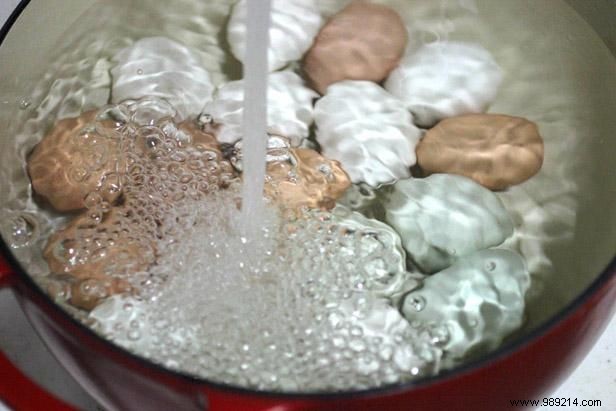
Hard-boil eggs by boiling for 8 minutes or baking in a 325-degree oven for 30 minutes (useful for large batches). As soon as they are cooked, rinse with cold water and pat dry. If you're wondering, brown eggs will keep the tint and white, and in some cases produce even richer colors.
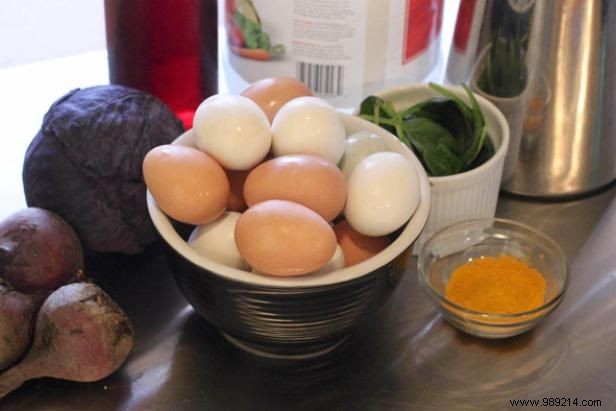
Fruits and vegetables such as onion skins, cranberries, and red cabbage can be chopped, boiled in water for 15 to 20 minutes, and strained to produce effective egg dyes. Onion skins will produce yellow eggs, blueberries a grayish blue, and red cabbage a surprisingly vibrant blue. Use about one cup of chopped ingredients per two cups of water.
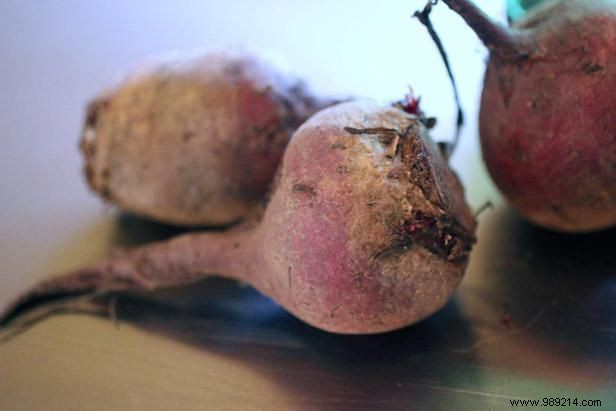
Beet juice, coffee, red wine, and colorful fruit juices can produce great colors with little effort.
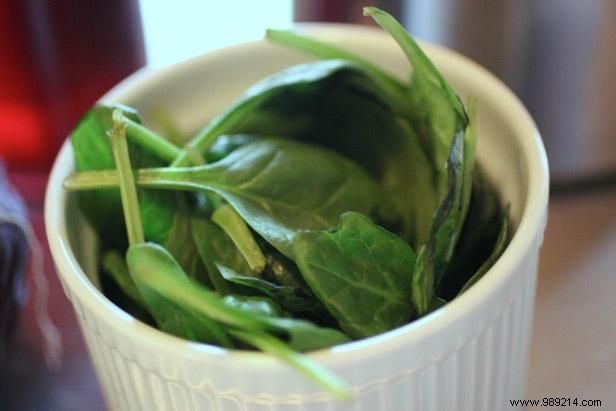
Boil half a cup of pureed spinach or a tablespoon of ground spices like paprika or turmeric in a cup of water to create bright green, orange, or yellow egg dye.
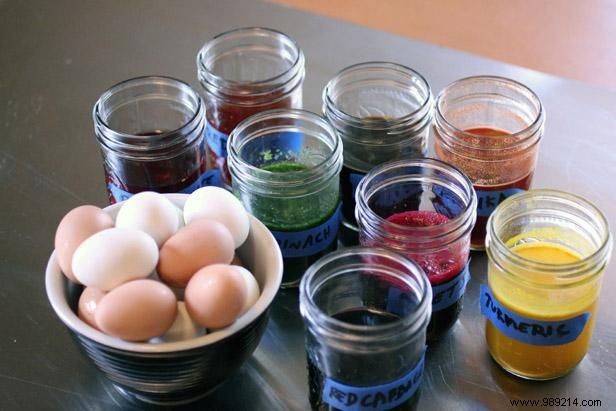
Fill wide-mouth pint jars halfway with prepared dyes.
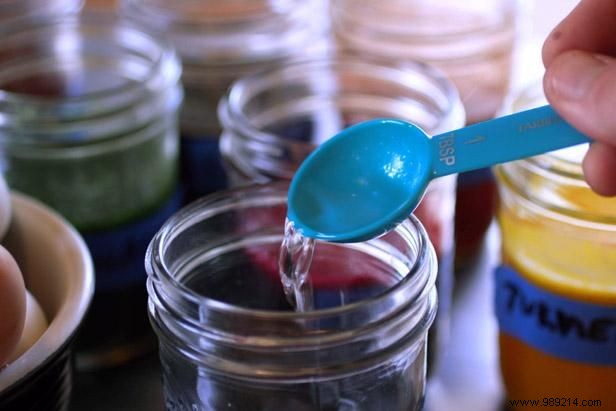
Stir a tablespoon of white vinegar into each jar. The acidic vinegar helps the dye bond with the egg shell, producing richer colors.
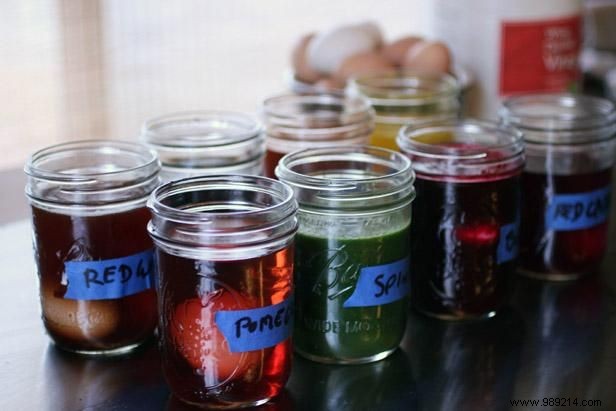
Place and egg in each dye and wait. The longer you soak the egg in the dye, the deeper the color will be. We soak anywhere from 30 to 90 minutes for a variety of shades, but can even be left overnight in the fridge. Some will dye evenly, while others may produce a less uniform coat. Try soaking them in various dyes to create unusual colors and patterns.
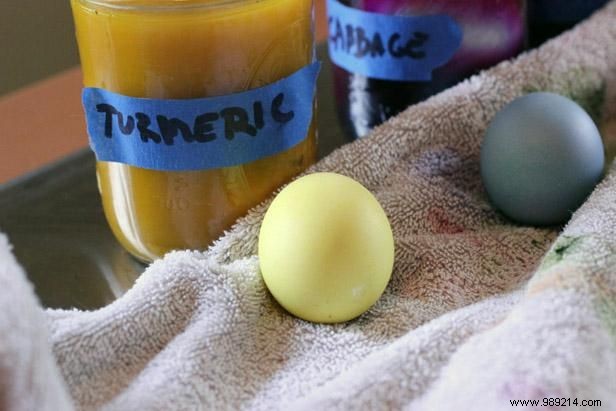
Once you have the color you're looking for, remove the dye egg.
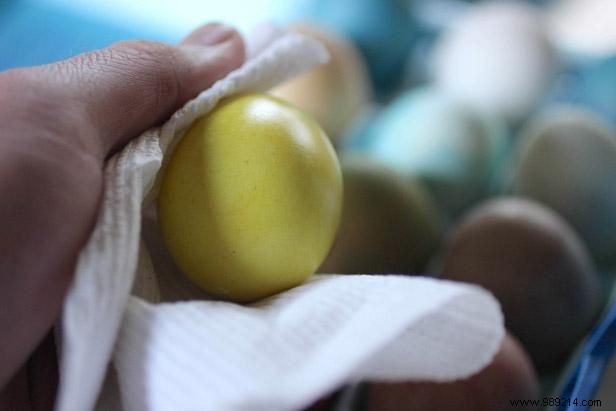
To add shine to your naturally dyed eggs, try applying a light coating of vegetable oil with a paper towel. A little goes a long way.
Naturally dyed Easter eggs are so much fun and can bring some unexpected color to your holiday palate. Try the natural dyes suggested here or create your own. Not every egg will be perfect, but it's a great way for children to explore colors found in nature.